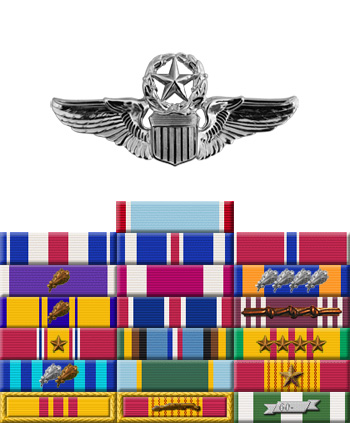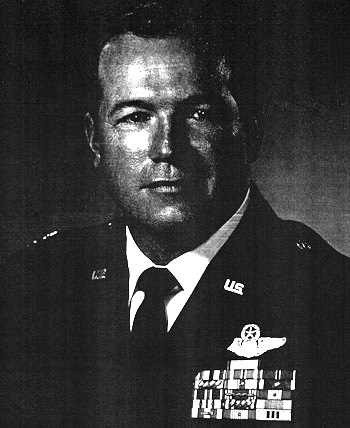
|
James K. Gibson |
 |
|||
| Rank, Service | ||||
Colonel O-6, U.S. Air Force |
||||
| Veteran of: | ||||
|
||||
| Tribute: | ||||
James Gibson was born on July 15, 1930, in Quitman, Texas. He enlisted in the U.S. Air Force on May 28, 1948, and attained the rank of Tech Sergeant (E-6) before attending Officer Candidate School in 1954. Gibson was commissioned a 2d Lt in the Air Force on June 18, 1954, and he completed Undergraduate Pilot Training and was awarded his pilot wings at Webb AFB, Texas, in June 1955. After completing instructor pilot training, he served with the 3506th Pilot Training Squadron at Greenville AFB, Mississippi, from November 1955 to February 1959. He completed the Aircraft Maintenance Officer Course in November 1959, and then served with the 3560th Air Base Group at Webb AFB until May 1961, when he transferred to the 51st Fighter Interceptor Wing at Naha AB, Okinawa. Gibson next served with the Air Force Contract Management Division from August 1964 to December 1967. He served as an Air Liaison Officer with the 3rd Brigade of the 9th Infantry Division in the Republic of Vietnam from December 1967 to March 1968, and then with the 19th Tactical Air Support Squadron at Bien Hoa AB until September 1968. His next assignment was as an instructor at the Air Force ROTC detachment at the University of Colorado, where he served from September 1968 to July 1971. Col Gibson then served as an exchange pilot with Canada from July 1971 to August 1975, before becoming the Commander of the Air Force ROTC detachment at the University of Wyoming, where he served from August 1975 until his retirement from the Air Force on February 1, 1977. |
||||
|
||||

